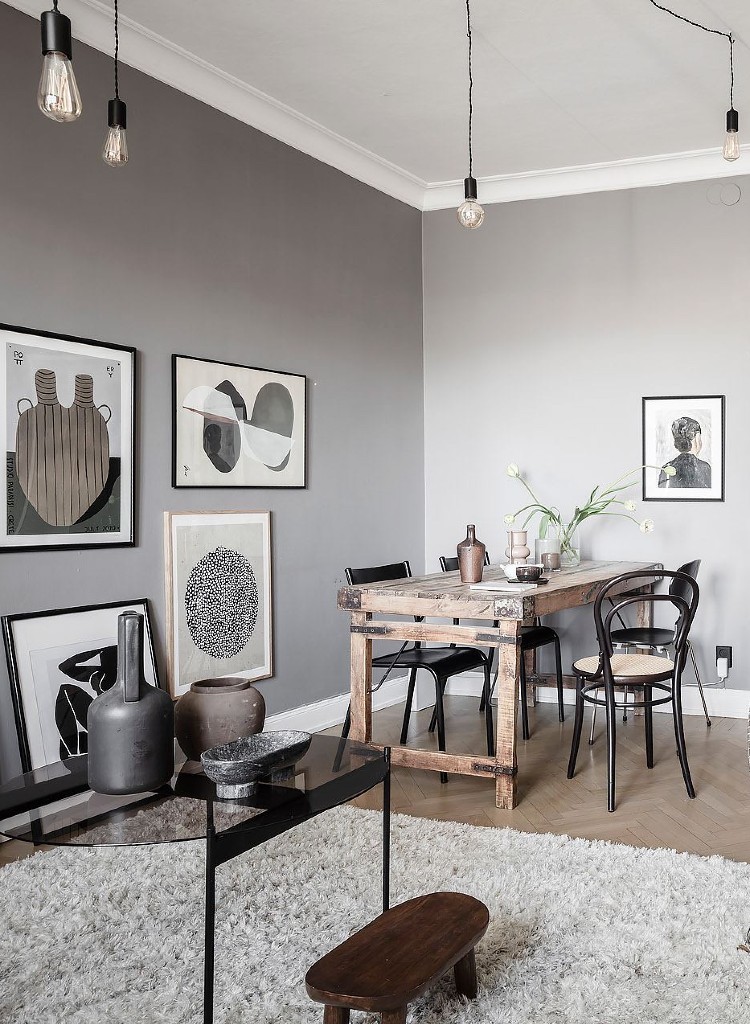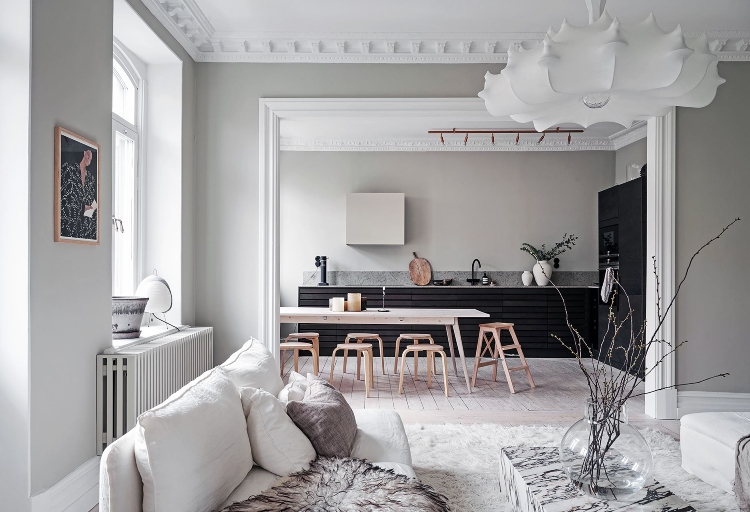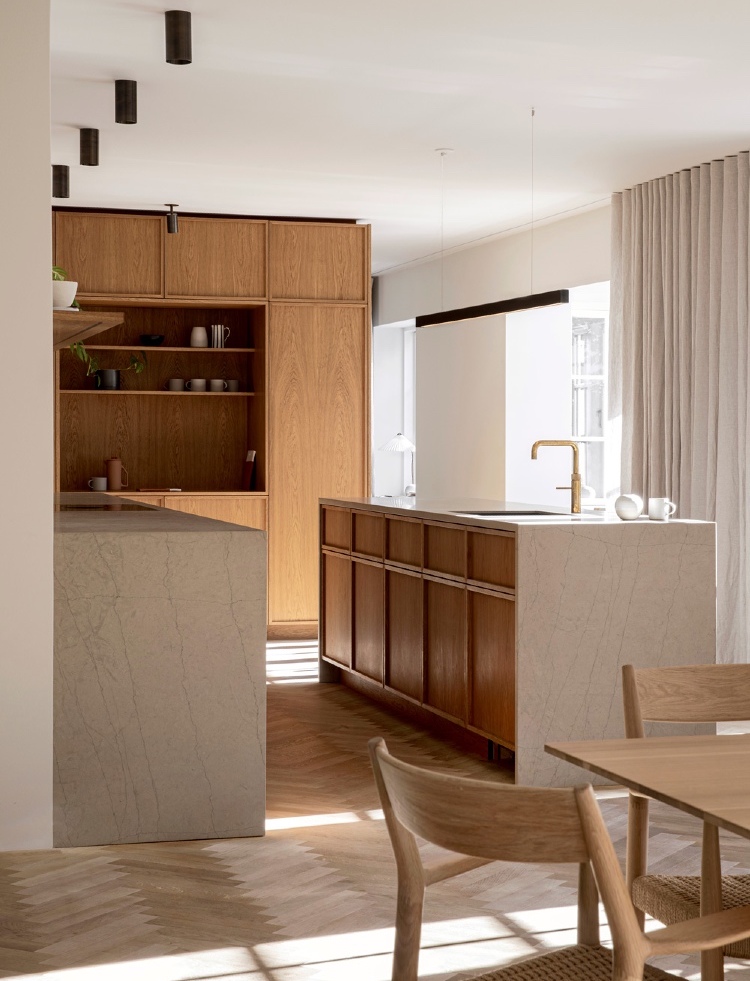
Mixing wood tones in a room can seem daunting. It’s a question that comes up repeatedly from my readers and friends. If you’re going for the Scandinavian decor look, there is usually a fair bit of wood in the home from wooden floors to wooden furniture. So I thought I’d share some tips on how to mix different wood tones in a room.
Mixing wood tones is definitely something you should do in a room. Keeping all the wood in the same colour will make your room look flat. Think back to those furniture catalogues from around 10-15 years ago full of matchy-matchy furniture – it was never a good look!
There are no hard and fast rules when it comes to mixing wood. While this is true, there are some things to keep in mind to create a cohesive look and avoid a chaotic look. So if you’re new to mixing wood tones or you’ve tried and your look isn’t quite coming together, these tips will help guide you.

How to mix different wood tones with confidence
1. pick a dominant tone
As a starting point, pick a dominant wood tone in the room. If you’ve got wooden floors that’s your dominant tone. Otherwise pick the largest wooden piece of furniture in the room like a dining table or a large wardrobe or a cabinet. There are times when you will inherit wooden floors or be stuck with a large piece of wooden furniture that you don’t love. If you can’t change it or re-stain it, then accept this as your dominant tone (don’t try and fight it because if it dominates, it dominates!) and go from here.



2. match undertones
Just like the importance of undertones in paint colours, wood has undertones that are equally important. Wood can be either warm, neutral or cool – generally speaking, a lot of woods lean towards warm undertones but not all. Check what the undertone is for your dominant wood and mix with different coloured woods but with the same undertone. Woods with warm undertones have a reddish or yellowy hue. Cool undertones look greyish while neutral undertones appear to have a beige hue.
Let’s say your dominant wood is warm with reddish or yellowish undertones. Mix with other warm woods in dark and light shades and you can’t go wrong. Or perhaps you have grey wood floors – floors with grey undertones are on the cool end of the spectrum so here you want to stick to other cool tones to avoid a clash. You can of course mix warm and cool tones but it’s much harder to pull off a cohesive look when you do this. If you want to experiment a bit, try mixing neutral tones in moderation with either warm or cool as this can work well too.
3. break up the wood
Use textiles and other surfaces to break up the wood. A large rug is a great way to break up the look on a wooden floor. If you have dining chairs in the same tone as your wooden floor, that can look a bit much but a rug can go a long way to breaking it up. If you have a lot of wooden furniture, consider adding in other textures like leather, stone or metal to break up the look. I particularly love some marble which contrasts really well with warm wood. Alternatively if you’re stuck with contrasting wooden tones like a warm floor with a cool table, a rug will help soften the differences in undertone.
4. Spread it out
When you decorate with different wood finishes in a room, it’s important to spread the wood around the room and not keep everything together. Say if you have a lot of light cool wood in a room and it’s all placed on one side of the room, it just won’t look right.



5. Mix it up
A great way to add interest when mixing woods is to use a combination of woods with different grain patterns and sizes. Alternatively, one of my favourite ways to mix it up is to use aged wood with new wood in the same undertones. For e.g. if you have a modern, smooth wooden coffee table then an aged wood dining table in the same room would look great. Or even something as small as an aged wooden stool will provide a nice contrast. This is an easy way to add interest and mix woods without trying to mix up different undertones.
6. Add in some white
You may have a lot of wooden pieces in different undertones which you have no choice but to live with. Or maybe you’ve tried mixing different woods and the look isn’t coming together. While lots of different wooden undertones can look chaotic, by simply introducing some white in to the mix, you can balance out the look. You can paint some of the wood white or add some white pieces of furniture. If your wooden floor is the issue, a large white rug can help or you could even whitewash your wooden floor. White and wood go together very well so this is the best way to balance out the look if nothing else is working.
Of course, as mentioned, there are no strict rules to mixing wood tones. The above tips are handy as a guide to get started in figuring out how to mix different wood tones. The most important thing to remember is that having too much of the same wood in a room (unless you live in a lodge) is going to make the room look flat and boring.
Image credits: 1, 2 & 8 – norm cph | 3, 4, 5 & 6 – alvhem | 7 – stadshem

[…] that standout, it’s also the contrasting wood finishes of the cabinets and dining table. Mixing wood tones is a great idea to create interest and avoid a room looking flat. You’ve also got the […]